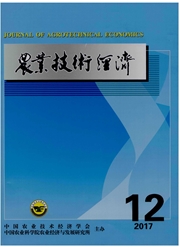

 中文摘要:
中文摘要:
气候变化是导致干旱区居民生计脆弱性的重要原因之一。构建生计脆弱性指标(Livelihood Vulnerability Index,LVI—IPCC)可以评估气候变化对干旱地区居民生计的影响。根据IPCC定义气候变化脆弱性的三个特征,选择新疆、宁夏两个典型干旱省份,调查社会人口指标、生计情况、社会关系网络、健康、食品、饮水安全、自然灾害和气候变化等数据,用复合指标和脆弱性指标进行对比分析。结果表明,宁夏在水资源、健康等方面的脆弱性更为明显,而新疆在社会关系、自然灾害和气候变化等方面更为脆弱。这种实证方法可用于被监测脆弱性,在缺乏地区性数据时检验某种政策的有效性。
 英文摘要:
英文摘要:
Climate change is an important cause of arid area residents livelihood vulnerability. LVI-IPCC can assess the impacts of climate change on living in arid area residents. According to the IPCC definition the three characteristics of of climate change vulnerability, the author chooses Xinjiang, Ningxia two typical arid provinces, investigates social indicators of the population, living conditions, social networks, health, food, drinking water security, natural disasters and climate change ect. data, and uses the composite index and vulnerability index analyzed. The results show that, Ningxia in water resources, health ect.sides, vulnerability is more obvious, and Xinjiang in the social relations, natural disasters and other aspects of climate change is more fragile. The empirical method can be used for monitoring vulnerability, test of the effectiveness of a policy in the lack of regional data.
 同期刊论文项目
同期刊论文项目
 同项目期刊论文
同项目期刊论文
 期刊信息
期刊信息
